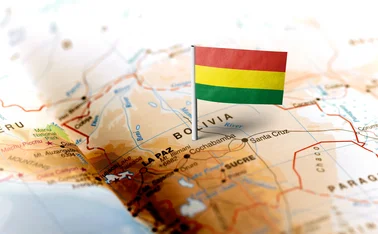
Rising rates seen as main risk by reserve managers
High asset prices and the halting and withdrawal of bond-buying programmes pose challenges

Reserve managers point to higher interest rates as the main risk to their portfolios in 2018, in the latest Reserve Management Trends survey carried out by Central Banking.
The process of policy normalisation initiated by the Federal Reserve is gradually tightening financial conditions. This transition, alongside the high equity and bond prices encouraged by low rates, and the unwinding of quantitative easing (QE), are the main challenges facing reserve managers.
The study includes 79 reserve managers worldwide, responsible for $5.5 trillion in total reserve assets, 54% of the world’s total.
Of the 69 respondents who answered the question on the most significant risks facing reserve managers in 2018, three-quarters identify tighter financial conditions as the main or second most pressing risk for their sector, with 59% calling it the main challenge. Emerging countries account for nearly half of the 41 institutions that say is is the main challenge.
Institutions exposed to US debt may face a depreciation of their assets if the Fed keeps increasing rates. That would increase yields and reduce the value of the assets on their balance sheet. An Asian reserve manager says rising rates in the US pose “considerable risk” to those central banks with “substantial” holdings of US Treasuries.
An African central bank is in a similar position: “Most of reserve managers with similar risk profile as us invest in short part of the curve, in particular in the US, where we do see a lot of pressure on the yields. If this scenario materialises, it will hit the 2018 performance.”
Furthermore, as the recovery became more solid in Europe and Japan in 2017, the European Central Bank and the Bank of Japan may soon follow in the Fed’s footsteps. “Rising interest rates and the expectation of unwinding QE policies in Europe and Japan could be the most significant factors. The combination of those two factors will generate more volatility in asset markets,” says a European reserve manager.
Nonetheless, reserve managers in industrial economies are more focused on overvalued asset prices. A third of respondents from these economies point out very high asset prices as the first or second main risk this year, while the overall average was 18%. Risks have been especially pressing since the Fed started to reduce its balance sheet in October 2017 and the European Central Bank reduced its monthly asset-purchase programme to €30 billion ($37.1 billion) in January.
“Due to the global excess liquidity, many asset classes are massively overvalued. A correction in rates and the normalisation of central bank policies will put significant pressure on bond yields and risky assets,” says a European reserve manager.
Active management
A majority of participants report active management portfolio policies. Forty-one out of 75 institutions answering a question on portfolio management say more than 50% of their portfolios are actively managed.
Active management appears an adequate policy to deal with the side effects of the ultra-loose monetary policy framework. “Given the low yield environment, there has been active management even in the asset-liability tranche in order to generate some excess return,” says a European manager.
Political and security crises
Political risks are seen as significant by a quarter of participants. A total of 18 institutions place these factors as the first or second most important challenge for the community.
“We expect developed economies to raise interest rates in the short and medium term, however geopolitical issues as the ones with Korea and Russia could affect volatility in the markets,” says a reserve manager from the Americas.
Increasing use of renminbi
Reserve managers are increasingly confident about renminbi’s role as a reserve currency. Following its inclusion in the International Monetary Fund’s reserve currency basket in October 2016, its global holdings rate has risen to 6.1% at the end of 2017, from 4.2% a year earlier.
“The survey confirms the continued momentum of renminbi. Respondents on average predicted that it will reach 8.5% of global reserves by 2020 – which would represent a very large increase from the latest IMF published level of 1.2% as at end 2017,” comments Christian Déséglise, global head of central banks, sovereign wealth and public funds at HSBC, the survey sponsor.
As many as 29 reserve managers contributing to the Reserve Management Trends survey think the yuan will account for 10–20% of their foreign exchange portfolio by 2020.
Only users who have a paid subscription or are part of a corporate subscription are able to print or copy content.
To access these options, along with all other subscription benefits, please contact info@centralbanking.com or view our subscription options here: subscriptions.centralbanking.com/subscribe
You are currently unable to print this content. Please contact info@centralbanking.com to find out more.
You are currently unable to copy this content. Please contact info@centralbanking.com to find out more.
Copyright Infopro Digital Limited. All rights reserved.
As outlined in our terms and conditions, https://www.infopro-digital.com/terms-and-conditions/subscriptions/ (point 2.4), printing is limited to a single copy.
If you would like to purchase additional rights please email info@centralbanking.com test test test
Copyright Infopro Digital Limited. All rights reserved.
You may share this content using our article tools. As outlined in our terms and conditions, https://www.infopro-digital.com/terms-and-conditions/subscriptions/ (clause 2.4), an Authorised User may only make one copy of the materials for their own personal use. You must also comply with the restrictions in clause 2.5.
If you would like to purchase additional rights please email info@centralbanking.com test test test







